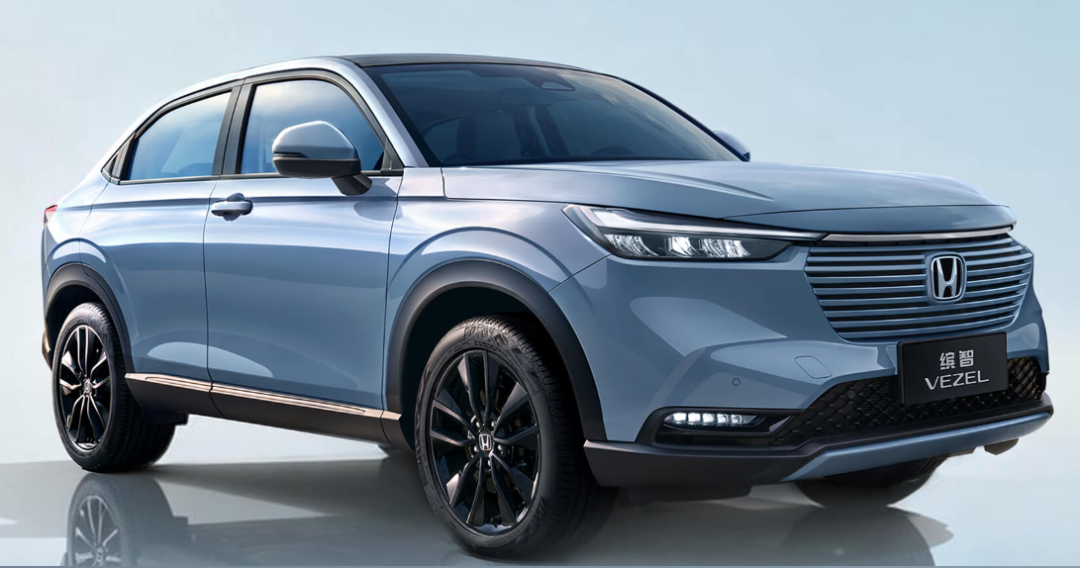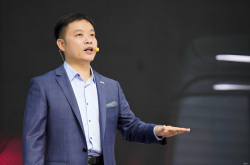GAC Honda's Net Asset Value Plummets by 27 Billion Yuan in Two Years: Is the P7 the Prelude and Conclusion of Its Transformation?
![]() 11/18 2025
11/18 2025
![]() 382
382
Authored by / Cheng Rui
Produced by / Five-Star Vehicle Review
"Given the sluggish sales of the S7 and P7, coupled with the subsequent pure electric vehicle models' lack of price competitiveness against Chinese domestic brands, it has become imperative to revise the development strategy, including performance targets. Currently, we are in the process of determining the delay period, which could extend up to a year," stated a source.
Recent reports from Japanese media outlets have assessed Honda's shift towards new energy, suggesting that the company has begun to "concede defeat." In just two years, GAC Honda's total assets have witnessed a net decrease of approximately 27 billion yuan, marking a decline of about 52%. This indicates that over half of the company's assets have seemingly "vanished."
GAC Honda's sales volume reached 259,600 units in the first ten months of 2025, reflecting a year-on-year decrease of 26.16%. The P7, which was officially launched in April 2025, was initially perceived as GAC Honda's grand transformation from a traditional fuel vehicle giant to a pioneer in the new energy sector. However, by September 2025, GAC Honda had only managed to sell over 1,400 units of the P7.
Honda may have come to the realization that it cannot effectively compete with Chinese new energy vehicle manufacturers. The P7 could potentially serve as both the overture and the finale of its transformation.
01 Over Half of Assets Have Seemingly "Vanished"
GAC Honda received a "lifeline" from its shareholders during its most challenging period.
On the evening of November 10, GAC Group (601238.SH, 02238.HK) announced that on October 30, its major jointly controlled entity, GAC Honda, entered into a property rights transaction agreement with Dongfeng Motor Group. Dongfeng Motor Group intends to sell a 50% stake in Dongfeng Honda Engine to GAC Honda for approximately 1.172 billion yuan (equivalent to approximately 1.287 billion Hong Kong dollars).
GAC Group stated in its announcement that it, along with Honda, Honda China, and GAC Honda, have entered into a capital increase agreement. Consequently, GAC Honda's registered capital will be increased from USD 541 million to USD 867 million. The company, Honda, and Honda China will collectively subscribe to USD 326 million (approximately 2.544 billion Hong Kong dollars) for the capital increase, in proportion to their respective capital contributions in GAC Honda.
The specific capital increase arrangement reveals that GAC Group will subscribe to 50% of the capital contribution in cash, amounting to USD 163 million (approximately 1.172 billion yuan). Honda and Honda China will contribute their respective 40% and 10% stakes in Dongfeng Honda Engine as capital contributions, corresponding to USD 130 million and USD 32.6216 million, respectively, equivalent to approximately 938 million yuan and 234 million yuan.
Following the completion of the capital increase, GAC Group, Honda, and Honda China will maintain their respective shareholding ratios in GAC Honda, continuing to hold 50%, 40%, and 10% stakes, respectively. Dongfeng Honda Engine is currently considered a high-quality asset, with its 2024 performance showing significant improvement. Its operating income increased from 9.566 billion yuan in 2023 to 17.852 billion yuan, and its net loss was transformed into a profit of 84 million yuan.
GAC Group stated that this transaction aims to facilitate GAC Honda's integrated operations in the engine sector. By acquiring full ownership of Dongfeng Honda Engine, GAC Honda can enhance the stability and autonomy of its supply chain, reduce related transaction costs, and strengthen the management efficiency of core component production.
By the end of the first half of 2025, GAC Honda's total assets amounted to 25.083 billion yuan, with net assets of 9.245 billion yuan and an asset-liability ratio of 63.14%. Among automotive companies, this liability ratio is not considered excessive. By the end of 2024, GAC Honda's total assets reached 30.497 billion yuan, with total liabilities of 20.85 billion yuan and an asset-liability ratio of 68.37%.
It is evident that GAC Honda's total assets have experienced a significant decline in just half a year.

Extending the timeline further, by the end of the first half of 2023 and 2024, GAC Honda's total assets were 52.036 billion yuan and 29.789 billion yuan, respectively. Its total liabilities were 39.789 billion yuan and 17.292 billion yuan, respectively, with asset-liability ratios of 76.46% and 58.05%.
It is clear that GAC Honda's total assets have experienced a net decrease of approximately 27 billion yuan in just two years, marking a decline of about 52%. This indicates that over half of the company's assets have seemingly "disappeared." The significant reduction in GAC Honda's assets is linked to its factory closures.
In July 2024, reports indicated that according to Honda's plan, it would close a GAC Honda factory in Guangzhou in October. This factory, which was constructed 20 years ago, primarily produces Accord sedans with an annual production capacity of 50,000 vehicles. In response, GAC Honda stated that it had unveiled the "Yunxin Zhiyuan" enterprise strategic transformation plan, aiming to construct a "smarter, greener, and more efficient" GAC Honda. "The company currently operates four complete vehicle production lines (with an annual production capacity of 770,000 units) and one production line under construction (with a designed annual production capacity of 120,000 units). Among these, the fourth production line with an annual production capacity of 50,000 units is scheduled to close in October 2024. The new energy production line under construction will commence operations in November 2024," GAC Honda explained.
GAC Honda also stated that it would continuously enhance its corporate competitiveness through quality and efficiency improvements across the entire supply chain, striving to achieve the strategic goal of becoming a leading enterprise in the Chinese automotive industry in terms of production and operation efficiency.
02 Only Over 1,400 Units of P7 Sold
GAC Honda's factory closure is part of its transition towards new energy, but it has missed the optimal opportunity. In 2020, GAC Honda's sales volume reached 805,800 units, marking a historical peak. From 2021 to 2024, GAC Honda's sales were 780,300 units, 741,800 units, 640,500 units, and 470,600 units, respectively, indicating an accelerating decline.
As sales declined, GAC Honda's operating income also entered a "downward spiral." From 2020 to 2024, GAC Honda's operating income was 118.427 billion yuan, 114.81 billion yuan, 115.113 billion yuan, 93.528 billion yuan, and 68.25 billion yuan, respectively, reflecting a drop of over 43% in four years. According to comprehensive data released by GAC Honda, Five-Star Vehicle Review found that its sales volume reached 259,600 units in the first ten months of 2025, marking a year-on-year decrease of 26.16%.
In the first half of 2025, GAC Honda's operating income reached 22.625 billion yuan, reflecting a year-on-year decrease of over 26% from 30.668 billion yuan in the same period last year.

In fact, Honda has also "invested heavily" in its transition towards new energy. On March 26, 2025, as the first domestically produced Accord rolled off the production line, marking the 26th anniversary of this historic moment, GAC Honda completed its era-defining strategic move—the official operation of the new energy factory in the development zone, with a total investment of 3.5 billion yuan, and the simultaneous launch of the first strategic pure electric vehicle model, the P7.
At that time, some evaluated that this ceremony, "paying homage to the future with classics," not only signified GAC Honda's grand transformation from a traditional fuel vehicle giant to a new energy pioneer but also set a value transformation benchmark for China's new energy vehicle industry with its "digital intelligence·zero carbon" new manufacturing paradigm. However, GAC Honda's "benchmark" has yet to be firmly established.
By September 2025, GAC Honda had only managed to sell over 1,400 units of the P7. In April, its first month on the market, 437 units were sold, and sales in subsequent months did not exceed 300 units. Due to the sluggish sales of the S7 (a new energy vehicle model sold by Dongfeng Honda) and P7, Honda believes that the price competitiveness of subsequent pure electric vehicle models will also be inferior to that of Chinese domestic brands. Therefore, it is necessary to revise the development strategy, including performance targets. Currently, the delay period is being determined and could extend up to a year.
In addition, Honda proposed a strategy in the first half of 2024 to convert all new vehicles globally into pure electric vehicles and hydrogen fuel cell vehicles by 2040, with a plan to achieve this goal in the Chinese market by 2035. However, with the evolution of China's electric vehicle product landscape, this strategy may also undergo adjustments.
------- The end -------







